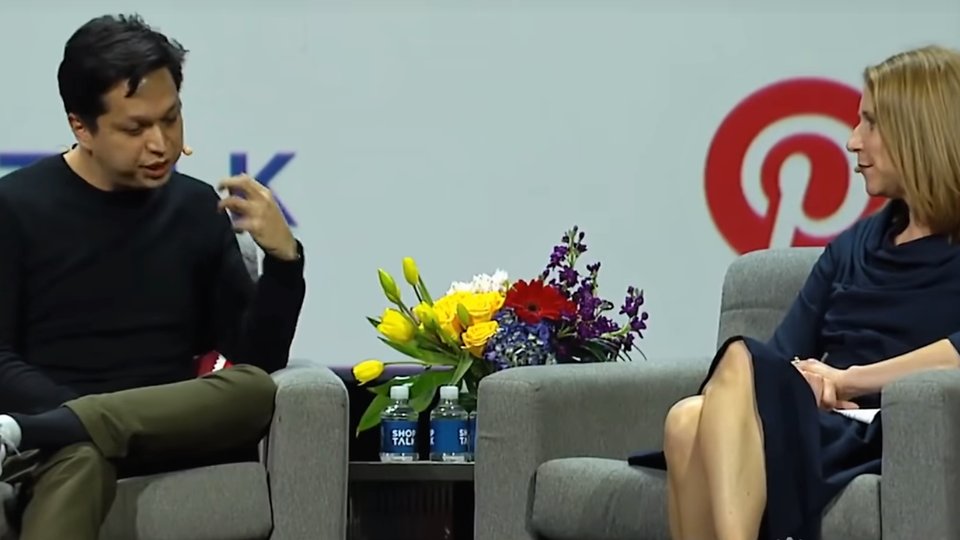Article
How Pinterest bridges the gap between commerce and shopping
Pinterest continues to find new ways to help consumers discovery their own creativity offering a visual search tool. The platform offering retailers and brands an opportunity to be part of this discovery process.

May 9, 2019 by Elliot Maras — Editor, Kiosk Marketplace & Vending Times
Ben Silbermann, co-founder and CEO of Pinterest, a visual discovery tool for consumers, sees his role as closing the gap between commerce — which is efficient, safe and reliable — and shopping — which is inspiring, emotional and associative. The social media site, which according to The New York Times had 250 million monthly active users as of October 2018, allows consumers to fine tune their tastes as they search for products they are interested in, while offering retailers and brands an opportunity to be part of this discovery process.
"I'm really excited about closing that gap," Silbermann said during a keynote presentation at the recent ShopTalk show in Las Vegas. Silbermann was interviewed by Zia Daniell Wigder, ShopTalk's chief global content officer.
Visual search should give consumers a way to touch what resonates with them aesthetically and find more options to help them refine their taste, Silbermann said. "It's an interactive process."
When opening Pinterest, the user feels like the items they see were hand picked for them. "They represent your taste, your style…it's just about you," he said. "And when you see something that catches your eye, we want you to be able to take action on it."
The experience mimics the best aspect of offline shopping where consumer walks into a store and an expert helps them find what's right for them, Silbermann said. "That experience of having someone or something help guide you, even if you don't know exactly what you're looking for, that is the biggest area for innovation," he said.
Shopping innovation needed
Silbermann sees Pinterest as improving an aspect of commerce that has not advanced as much as aspects such as selection, delivery, payment and returns. Shopping, an emotional, introspective and visual experience, still has room for a lot of innovation, he said.
Pinterest provides the user a unique environment, in which people are thinking about themselves — how they will feel in the room they are decorating or how they will look in an outfit.
"But they're still really open minded," he said, meaning they haven't decided what to buy. This is the point where the retailer or the brand can help them.
When discussing the customer buying experience, retailers often envision a funnel showing awareness, consideration and purchase, which Silbermann called a "super linear process."
"But when you watch people actually shop, it doesn't exactly follow that at all," he said. "Sometimes they're going up, sometimes they're going sideways and sometimes they're going down."
Consumers often begin the journey with an "open ended" idea, then see something that inspires them that broadens their horizons before redefining their taste.
"Understanding that and then meeting consumers where they are on that journey, I think is really important," Silbermann said.
New features arrive
Meanwhile, technology brings new innovations.
Retailers and brands are now able to upload their entire catalog and organize it on Pinterest as they see fit, Silbermann said. "When retailers can upload their catalogs, Pinterest can do a better job of showing consumers the retailer's products in context," he said. "The more the products are there, the better the relevance gets."
The company has also simplified its shopping advertising products, he said. This allows brands and retailers to extend their reach once they find out what products are most popular. Both offline and online retailers and brands have taken advantage of these capabilities, he said.
The platform's Shop The Look feature now uses computer vision to automatically identify objects of interest in a scene and find items from its retailer and brand partners that are visually similar.
Computer vision has mirrored voice technology in that it went from a project to something useful in certain cases to a more general tool, Silbermann said.
One of his favorite computer vision use cases is for beauty queries. The platform recently introduced skin tone filters enabled by computer vision. Computers have improved in turning visual elements into experiences that inspire people.
And thanks to artificial intelligence, Pinterest can now identify a user's personal aesthetic choice in consideration of general tastes and draw inferences, even if the user doesn't have the vocabulary to describe specifically what they are attracted to.
One user said she always knew what kitchens she liked when she saw them, but she didn't know her taste was called the farmhouse kitchen. Hence, should could not have known what to search for at a store.
"We think that technology that can bridge that gap between feeling inspired and then finding the individual items that work for you at your price point — it is just really great for consumers and mimics the natural way that people want to shop, especially for things that are taste based, things that are aesthetic, things that are visual," he said.
He thinks Pinterest helps people discover their own creative capabilities.
"Our goal is to give you inspiration, motivate you to buy product, and then (allow you to) go live the life that's the product of that hard work," he said.
About Elliot Maras
Elliot Maras is the editor of Kiosk Marketplace and Vending Times. He brings three decades covering unattended retail and commercial foodservice.





